Stepping on, touching, contemplating, breathing on the land from which they spring vine strains loaded with clusters, and picking them up with our hands helps us better understand natural life cycle, organic, the importance of water and each living being that interacts in that habitat where everything has its function and its reason.
15 kilometers from the city of Lleida, in an extension of crops that exceeds 700 hectares, Raventós Codorníu, the wine company with 460 years of history dedicated to the production of wines and cavas –it is one of the oldest in the world–, has opened its Raimat vineyards for live the experience Raimat Natura, an invitation to discover his biosustainable farm through the personal enjoyment of visitors by facilitating different activities.
Various signposted itineraries accompany the journey through this large agricultural area in which a hundred animals –some in danger of extinction– coexist participating in this natural evolution of the seasons of the year between ancient oaks and ponds.
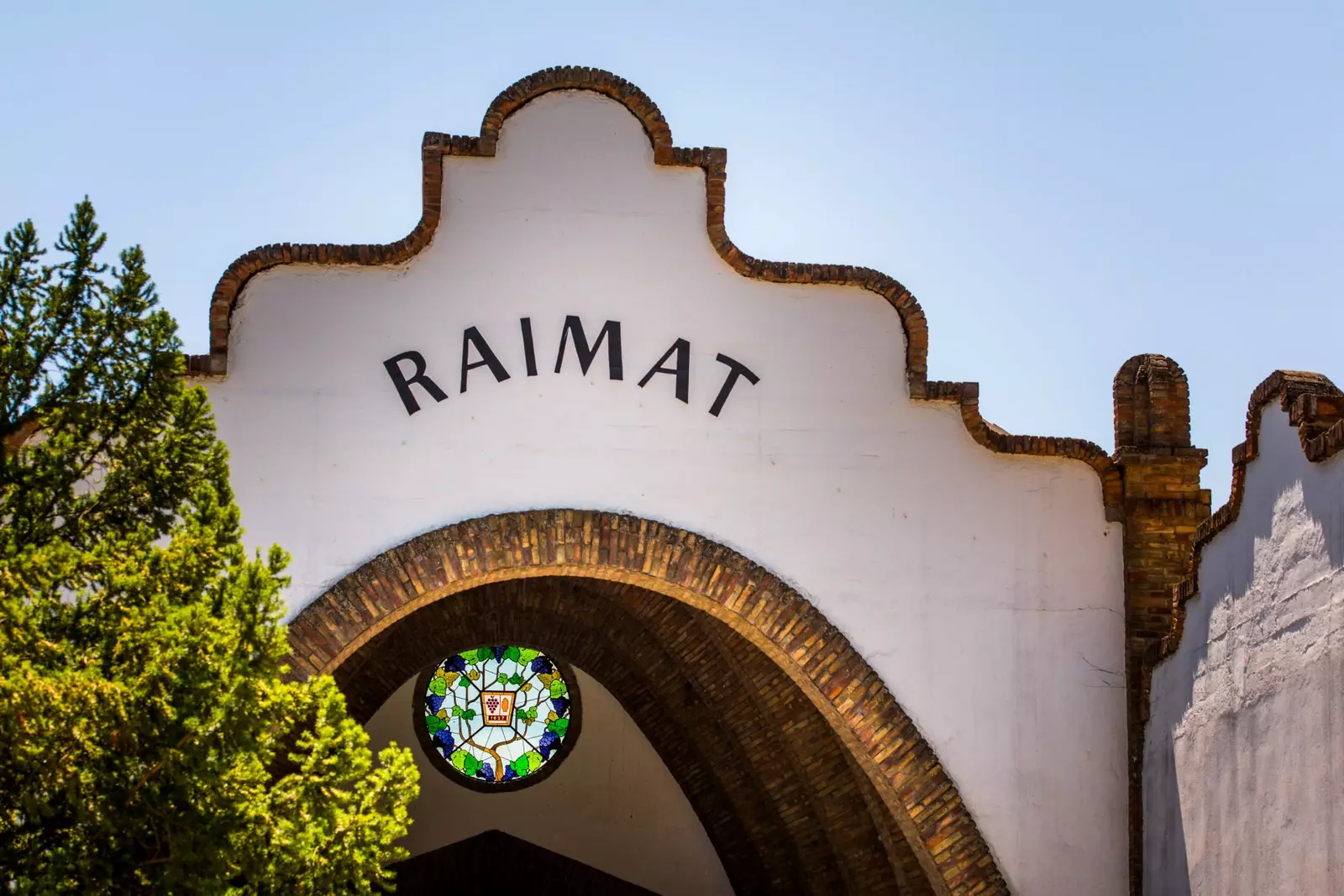
Raimat winery and vineyards.
IN NATURAL BALANCE
At the beginning, according to Joan Esteve, director of the Raimat winery, the starlings, those small birds with yellow beaks, devastated the vineyards, until hunting was prohibited. And without shotgun shots, partridges, rabbits, hawks, eagles and other scavenger birds are in charge of keeping the vineyards free of invasive birds as were the starlings.
“It is an example of when the natural balance is broken, a problem is generated. And this large extension of land implies a enormous environmental responsibility , with so much land, we have a lot of influence”, points out Esteve.
All the vegetation is planted, it is all the result of reforestation, there are even some groves, for example, in the surroundings of the Raimat offices and warehouse. "That's why I was born the Raimat Natura project, to show and demonstrate the coexistence of viticulture with the environment of swamps and nature.
All our vineyards are ecological, we use renewable energies and we improve the cycle of the earth by incorporating organic matter, to improve soil fertility. Why not open it to the public, let them walk around and see what we do, touch it and taste the grapes”, adds the director of Raimat.
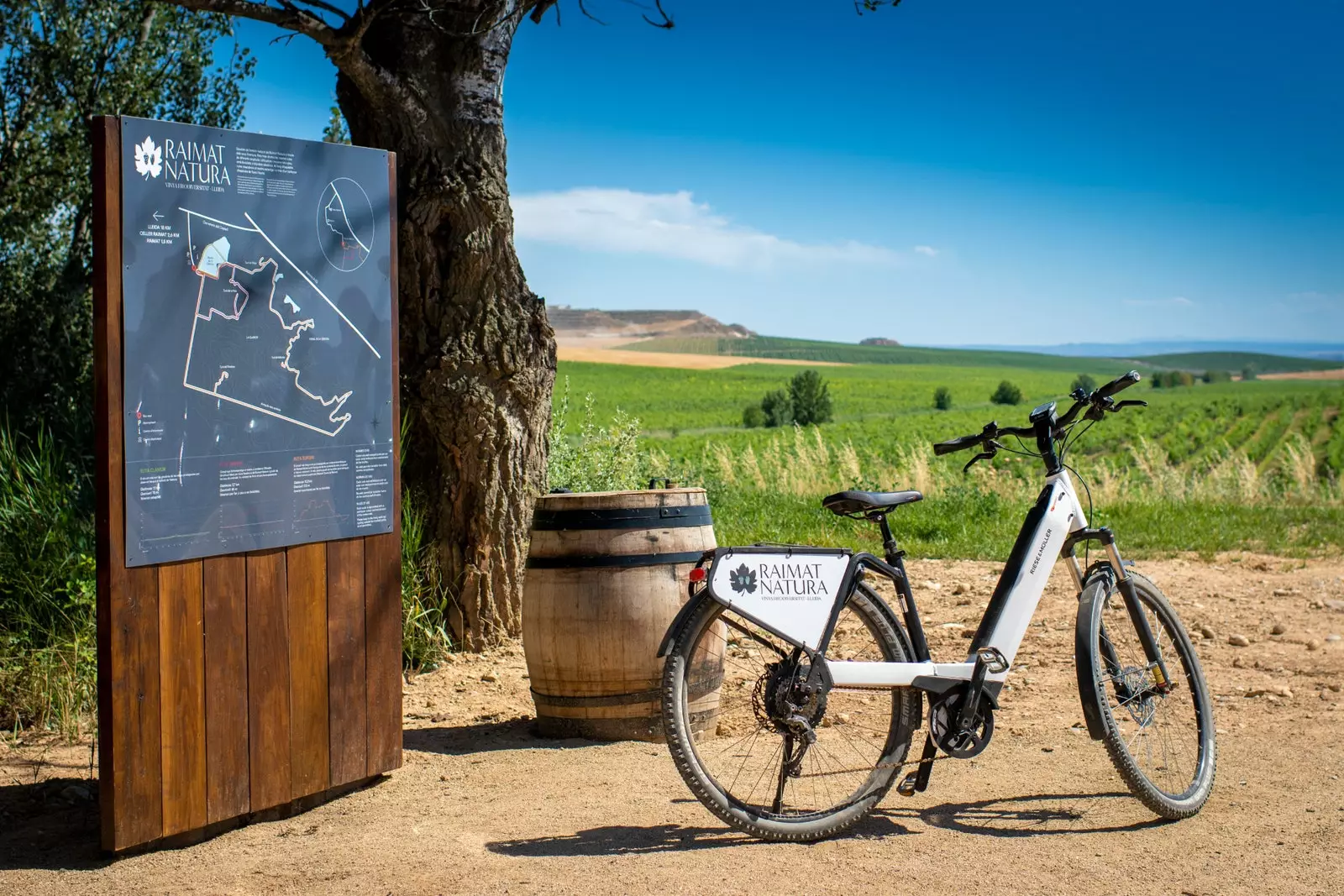
Bicycle in Raimat.
WATER, WINES AND LANDSCAPE
The water came to this enclave from the hand of a will, that of the owner of Codorníu, Manuel Raventós, that in 1914, he set out to turn what was then dry and barren land into what it is today, vineyards and vineyards for a purely organic wine production, since its inception. This is how our cups are filled with a sustainable landscape, that respects the time of spontaneous sprouting and maturing, to the beat that earth, water, wind and sun decide.
Thus, the wines end up concentrating very authentic flavors, made up of aromas, essences, smells, a presence in which all that care affects the vineyard. And that attentive care, in turn, draws a sublime landscape for its spontaneity, without being manipulated.
Land, vines, traditional breeding, square kilometers of agriculture that now open up like a raised book to sneak into it and learning how grapes are born and transformed into must that is bottled and served and tasted as wine.
And, at the same time, we have walked, pedaled, in normal or electric bicycle, we have sat down to enjoy the cinema al fresco or we have flown over the vineyards in a balloon, before sitting down to savor meat, fish, and that sip of nature in our glass from a terrace that elevates our view over the countryside.
Raimat Natura is the open door to the Raventós-Codorníu estate that brings us closer to the vitivinicultural dimension which even gives us the opportunity to make our own wine.
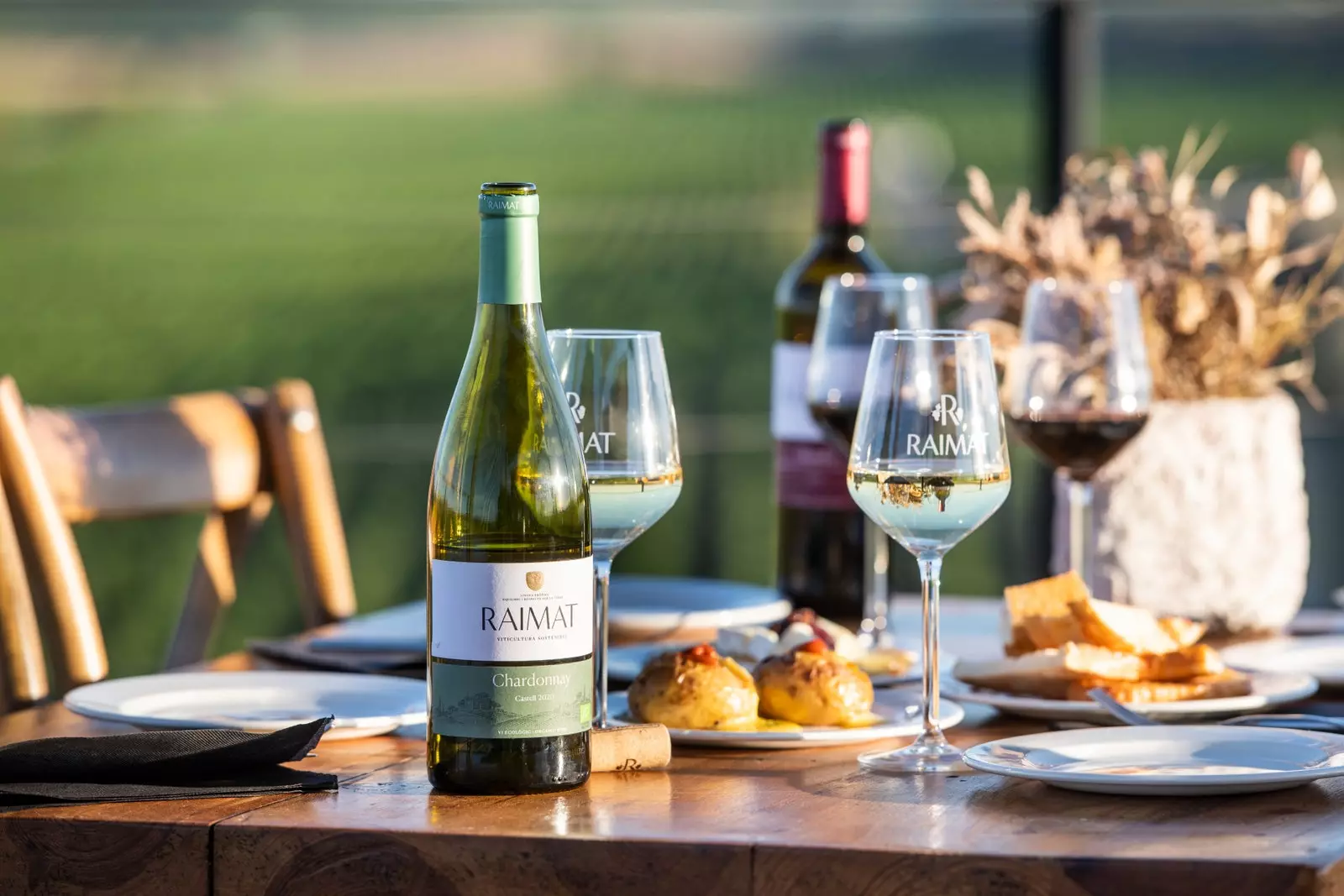
Wines and food in Raimat.
THE HARVEST
During these harvest weeks (four or five weekends between the end of September and during the month of October) in the Raimat estates they celebrate the grape harvest as a family –for groups of 20 people and with prior reservation–. “We pick the grapes, we fill a barrel with must, each group signs with their identifying name on them and is bottled, and in about three months, they can come and pick it up”, explains the director of Raimat, Joan Esteve.
Breads, cheeses and desserts as artisanal as that wine can be paired with our first experience of our own wine, already at home. But we will have the memory and the desire to return to experience an autumn sunset on the terrace overlooking the Raimat vineyards. On the horizon, a spectacular sunset says goodbye to our harvest day. It is an idyllic place, a giant oil painting of colors traced in three dimensions, traces that each season of the year will draw.
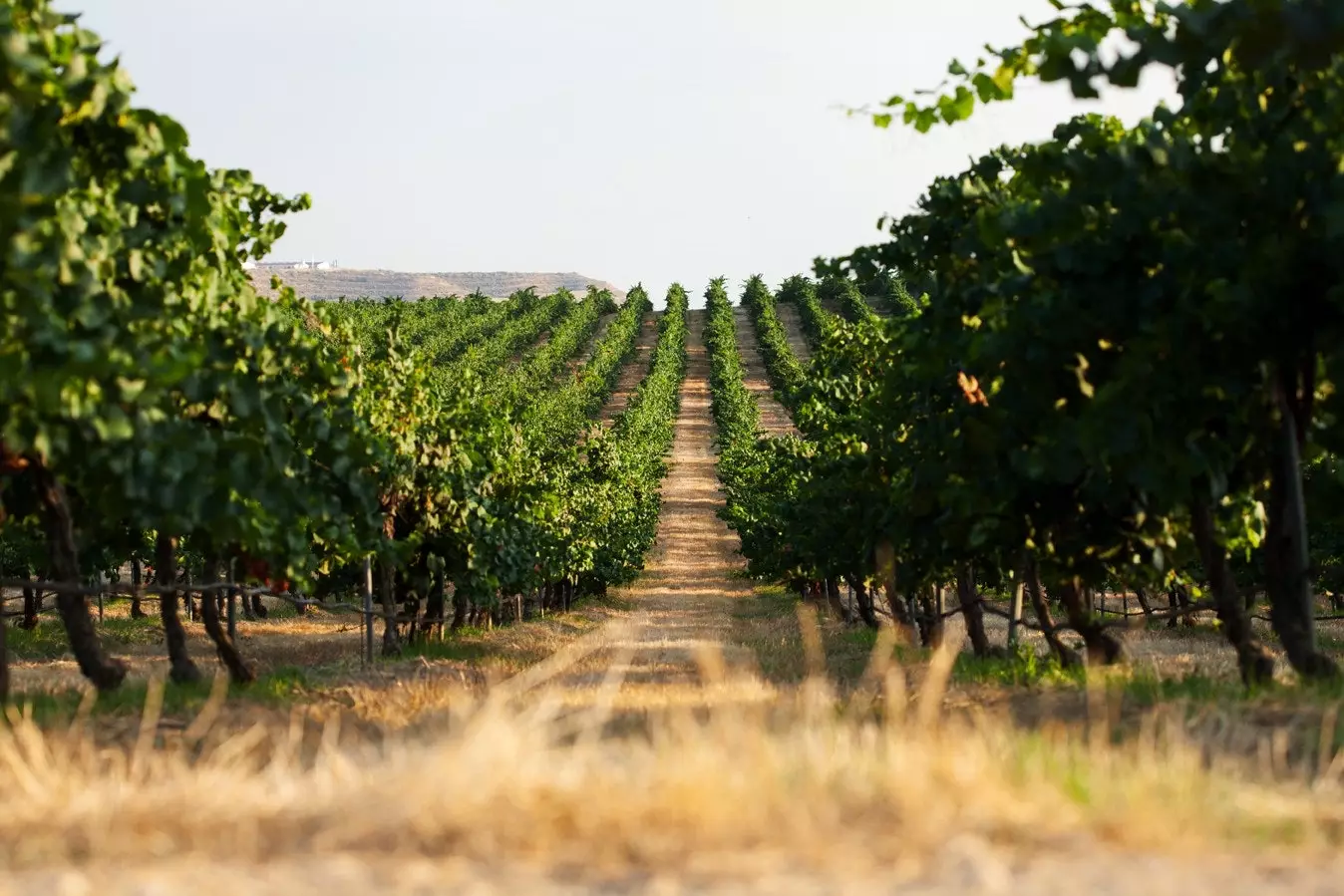
Vineyards in Raimat.
STRAINS THAT GAVE RISE TO A PEOPLE
We walk, pedal and fly between those strains that more than 100 years ago gave life to an empty territory , and gave birth to a whole people. This is the raimat story, which has its origin in 1914, when Manuel Raventós, the owner of the Codorníu winery in Sant Sadurní d'Anoia, located a large area of land fifteen kilometers from the city of Lleida.
He was looking for land to expand his wine production. And where there was nothing but the remains of an Arab castle, he knew advance in his mind how in that extension he would plant vines that would give rise to bunches of grapes with which he would make new wines.
From the projected irrigation canal between Aragon and Catalonia, he procured water for his dream vineyard and thus prepared the land to plant the trunks of the vine. Among all of them, especially those who came from Galicia stand out, of which today in the Lleida winery the Saira Raimat, the Albariño from the Catalan firm, Probably the only one made entirely with this variety originally from Galicia, outside Galician lands.
Air, temperature, sun, and the lands originally so dry and today fertile of Raimat give this albariño and all the varieties that are bottled in the wineries of Lleida, its aromatic seal. If the architect Antoni Gaudí had not already been busy with the works of the Sagrada Familia, perhaps the Raimat winery had been designed by him, as seems to have been the will of Manuel Raventós, who finally commissioned the project to the disciple of Gaudí, Joan Rubió i Bellver.
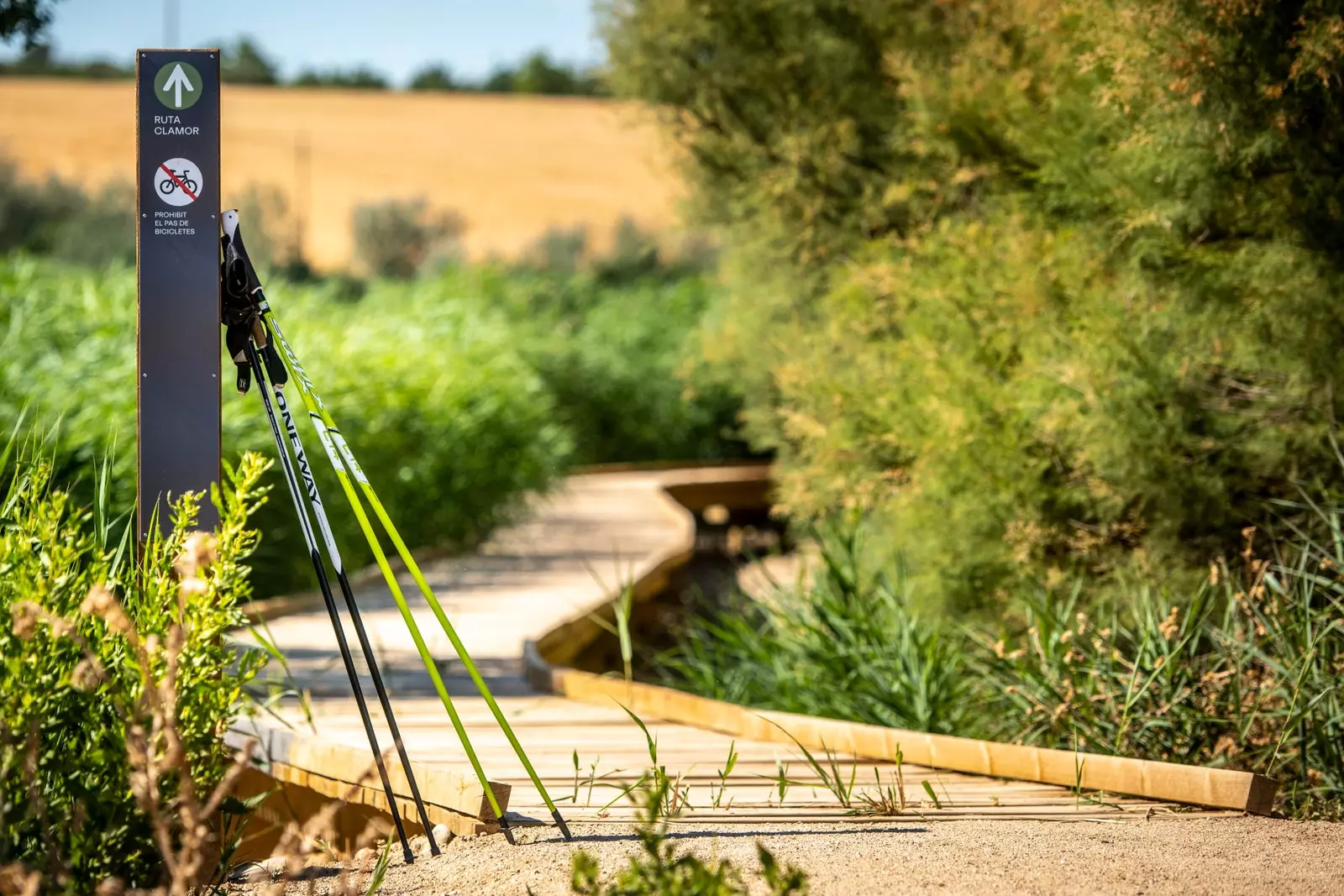
Walking around the farm.
Vineyards and production in that winery sent many of the workers from the Raimat estate, which he built for them, from Andalusia and Extremadura an agricultural colony that currently still has about 400 inhabitants.
Today Raimat belongs, as an aggregate nucleus, to the municipality of Lleida, although the Raimat cemetery is still part of the owned by the company that planted the vines and gave the place its name. Through the cultivated land, in this enclave you continue enriching the territory, now with food and wine, sports and cultural proposals.
They are an attractive invitation to learn homegrown sustainability, from years of respect for the environment, for the vineyard and for the landscape. An interpretation center welcomes the Raimat Natura space , where – between discovery, learning, experience and fun – wine always reigns.
